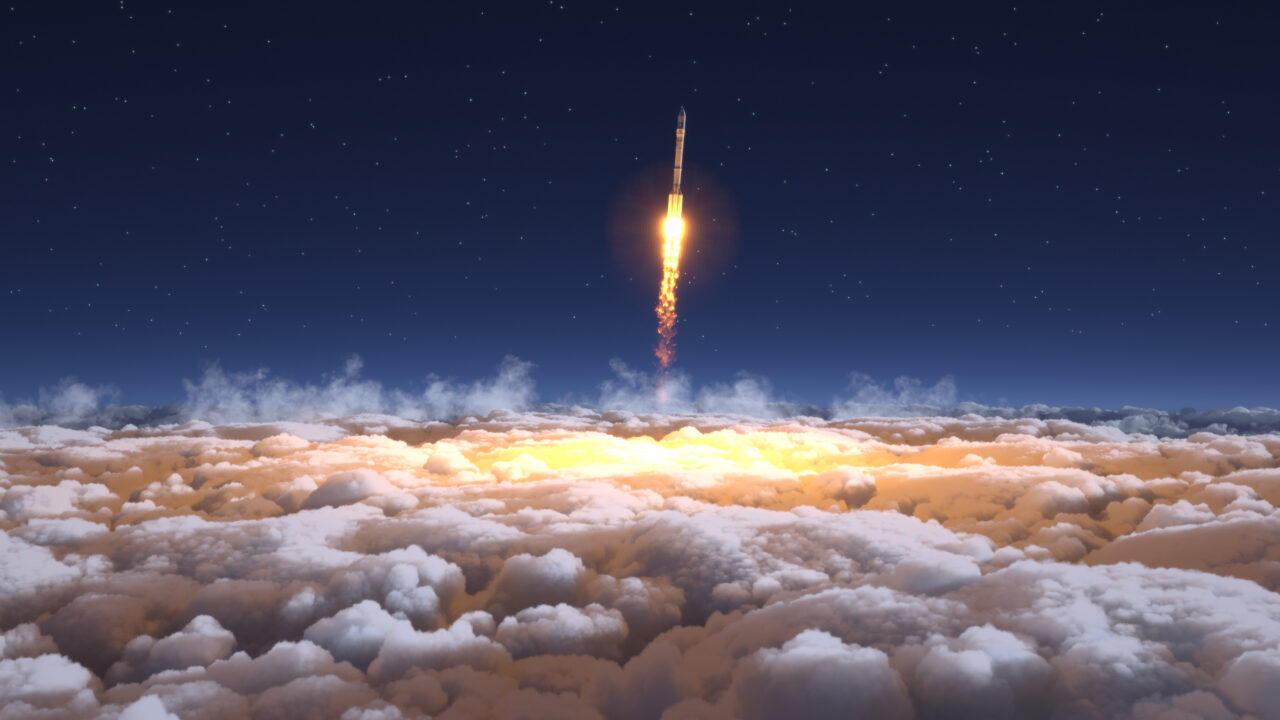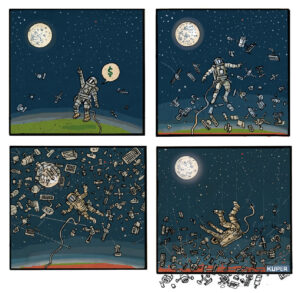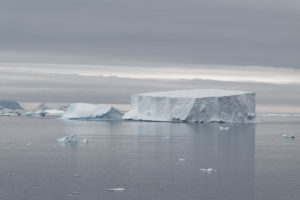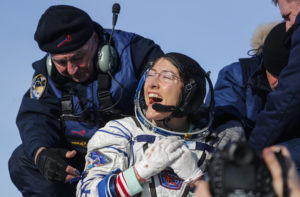Let’s Not Nuclearize the Heavens
Russia’s emergent nuclear anti-satellite program highlights the dangers of viewing outer space as a battleground. Image: Adobe
Image: Adobe
Last August, the Russians sent a probe to the moon, something they had not attempted since 1976. It crashed. “This is another indicator of how the Soviet/Russian space program has deteriorated over the years,” Leroy Chiao, a former NASA astronaut, told Radio Free Europe. “The fact that they cannot mount a mission to the moon like they did in 1976 speaks volumes about the state of their aerospace industry today.”
Now the White House has warned that the Russians may be planning to put a nuclear anti-satellite weapon into space as soon as this year. This type of weapon, CNN reported, could “destroy satellites by creating a massive energy wave when detonated, potentially, crippling a vast swath of the commercial and government satellites that the world below depends on to talk on cell phones, pay bills and surf the internet.”
Putting a nuclear device on top of a rocket is a marriage of two very high-risk technologies. Given the Russian space program’s record of “embarrassments, failures, and scandals,” not to mention their history of carelessness with radioactive materials, maybe we should be as worried that they’ll fail as that they’ll succeed.
It’s not unknown, for instance, for a rocket to blow up on the launchpad. Such a catastrophe might not detonate the nuclear device, but it could damage it, spreading radiation within a few miles of the site. Or the rocket might explode — experience a “rapid unscheduled disassembly,” in rocketeer jargon — as it ascended, dropping its damaged, radioactive payload somewhere else. One wouldn’t want to be at that spot, or anywhere nearby. There’s no knowing the yield of the hypothetical weapon. In the 1960s, the Soviets conducted high-altitude explosions of small nuclear devices with yields of three kilotons. As a benchmark, that’s only about a fifth the yield of the Hiroshima bomb. It’s still the equivalent of 3,000 tons of dynamite, plus localized radiation within a few miles’ radius. Within that area, a mortality rate of 50% would be expected. What if that were a densely populated city like New York or Tokyo or, closer to home, Moscow?
“The fact that they cannot mount a mission to the moon like they did in 1976 speaks volumes about the state of their aerospace industry today.”
Let’s review the history. The Soviet space program scored stunning early successes in the space race with the Americans. They orbited Sputnik, the first satellite, in 1957; sent the first probe to the Moon in 1959; and orbited Yuri Gagarin, the first human in space, in 1961. These conquests look all the more remarkable now that we know how very ramshackle the program was. While trumpeting their undeniable victories, the Soviets hid their many failures. Poorly funded, squabbling for supplies and constantly hurried by ignorant political figures, Soviet scientists and engineers jerry-rigged rockets and space vehicles that were extremely hazardous and sometimes deadly. It was only after the fall of the Soviet Union in 1991 that we began to learn what a Potemkin space program it really was.
In Sputnik II, they put the dog Laika in orbit as a propaganda coup, knowing full well she would die up there. Her corpse circled the planet for five months before being cremated on reentry. Gagarin barely survived a fiery, tumbling reentry himself. Cosmonaut Vladimir Komarov was not so lucky. In 1967 his Soyuz capsule, rushed into service and plagued with problems, smashed into the ground and exploded, leaving him a charred lump unrecognizable as human. Three other cosmonauts died of asphyxiation when all the oxygen leaked from their capsule in 1971. They couldn’t fit into the capsule wearing life-saving spacesuits and helmets, so they were squeezed in wearing only wool outfits resembling leisure suits. And the Soviets still hold the record for the most deadly rocket accident ever, a monstrous launchpad explosion that killed as many as 165 people. There are numerous such examples of dangerous or deadly failures, most of which the Soviet government covered up at the time.
Things didn’t improve after the Soviet Union collapsed in 1991. The cash-strapped Russian Federation that inherited the space program allowed already shoddy equipment and facilities to deteriorate further into dilapidation. Western visitors to the Russian space station Mir in the later 1990s were appalled by its dangerous decrepitude.
That tradition has continued. In 2019, The New York Times reported that a nuclear-powered cruise missile the Russians were testing exploded, killing at least seven workers at the test site and spreading radioactive material detected 25 miles away. Previous Russian tests of anti-satellite weaponry have not gone well either. In 2021, their military used a missile to destroy one of their own Soviet-era satellites in orbit. The resulting debris cloud forced the crew of seven aboard the ISS to shelter in docked spacecraft. A NASA spokesperson deplored the test as “reckless and dangerous.” French defense minister Florence Parly colorfully condemned the Russians as “space vandals.”
Meanwhile, the Chernobyl catastrophe of 1986 is only the most familiar in a dismally long history of Russian carelessness with nuclear materials. In the Soviet years they test-fired nuclear weapons on the Novaya Zemlya archipelago in the Arctic an astounding 130 times. The most-nuked region on the planet, however, is a zone of Kazakhstan called by the appropriately sci-fi name the Semipalatinsk Polygon. From the very first Soviet atom bomb test in 1949 through to 1989, more than 450 nuclear devices were detonated there. Some 1.5 million people were exposed to the radiation, then monitored like lab rats to clock the effects. Related illnesses and abnormalities including genetic mutations persist to this day.
The cash-strapped Russian Federation that inherited the space program allowed already shoddy equipment and facilities to deteriorate further into dilapidation.
Chernobyl has not been the only nuclear plant they have mishandled. One of the largest and dirtiest, the Mayak plutonium facility in the Chelyabinsk region, was kept secret during the Soviet era. It has experienced more than one radiation-spewing incident, ranking not far behind the Chernobyl and Fukushima disasters in impact, and dumped so much radioactive material in a local river and lake that fishing the river became a deadly pastime and the lake had to be filled in with concrete. As recently as 2017, the Mayak facility was believed to be “the source of a radioactive cloud that hovered over Europe.”
The Soviet Russians were also notorious for dumping radioactive waste in the ocean, making the Arctic’s Kara Sea “the world’s largest known nuclear dump,”” and sinking spent reactors near the coast of Japan. They even ringed their own capital city Moscow, site of much nuclear research at the time, with radioactive dump sites that remain public hazards. Small wonder all of Europe has been in a state of alarm since 2022, when invading Russian troops seized the huge Zaporizhia nuclear power plant in Ukraine.
The space race was an arms race from the start. The rockets that powered the nominally peaceful explorations of cosmonauts and astronauts were developed to carry nuclear warheads. In the 1960s, the U.S. and Soviet Union conducted high-altitude nuclear detonations the results of which were so alarmingly unpredictable that both sides agreed to an Outer Space Treaty in 1967, banning the use of nukes in space. It is still in effect, and all other spacefaring nations are signatories.
Although Putin denies that Russia is developing a nuclear anti-satellite weapon, the U.S. and Japan have used the story to sponsor a U.N. security council resolution for renewed commitment to banning nuclear weapons in space. Russia has denounced the move as “yet another propaganda stunt by Washington.”
Your support matters…Independent journalism is under threat and overshadowed by heavily funded mainstream media.
You can help level the playing field. Become a member.
Your tax-deductible contribution keeps us digging beneath the headlines to give you thought-provoking, investigative reporting and analysis that unearths what's really happening- without compromise.
Give today to support our courageous, independent journalists.






You need to be a supporter to comment.
There are currently no responses to this article.
Be the first to respond.